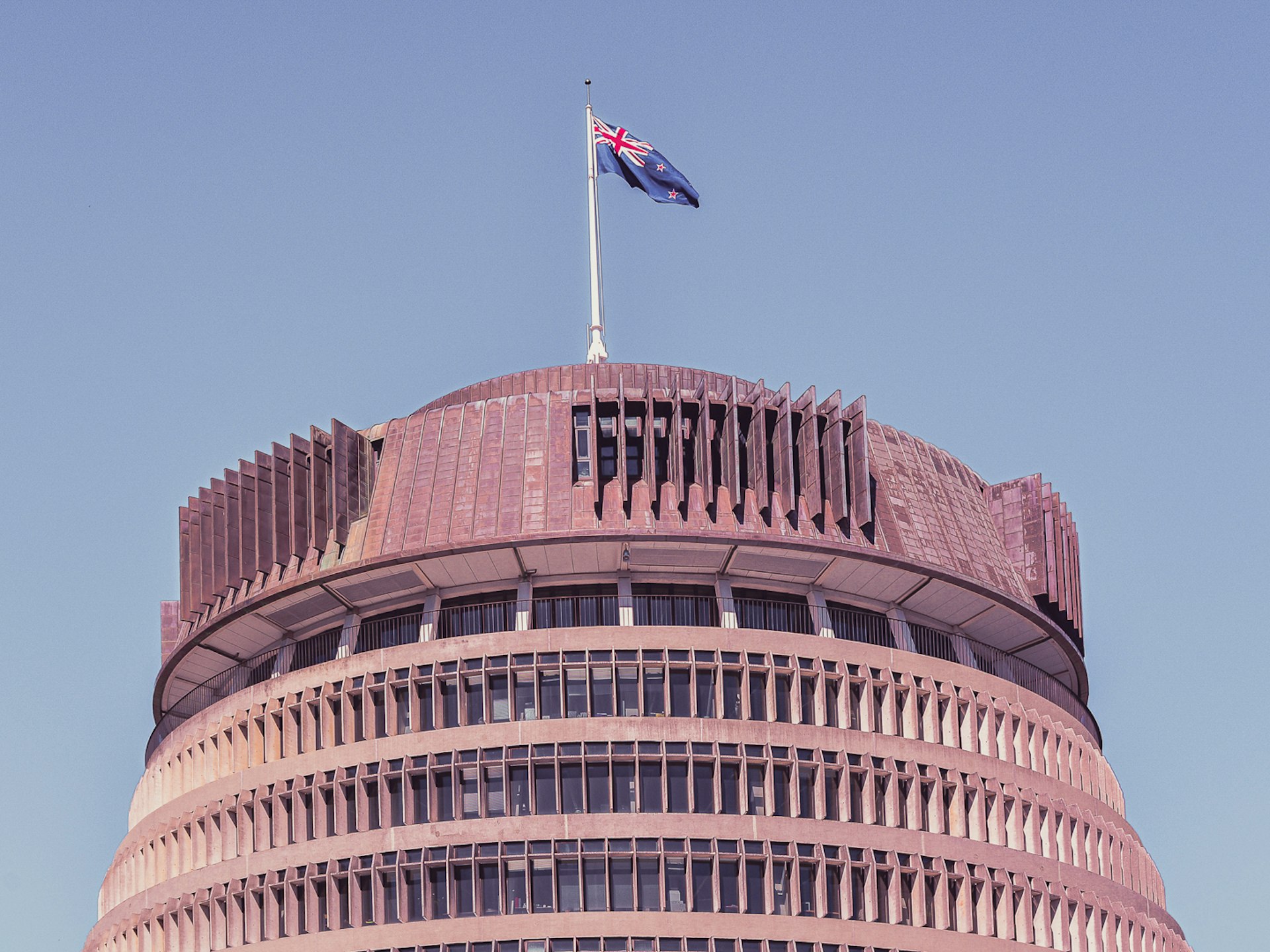Hayden Munro: Budget 2022 recap
We asked Hayden Munro to give his take on what Budget 2022 means for the economy. Hayden was Campaign Manager for Labour’s 2020 general election campaign and now works for Wellington-based agency Capital.

Thursday 19 May was an important day in the New Zealand Government calendar, as Grant Robertson, Minister of Finance, delivered the Budget for 2022. It’s important to note that the economy doesn’t ‘equal’ the share market, but any impact on the economy through changes in the budget, can affect businesses.
Yesterday’s Budget contained significant new investments and was delivered against a backdrop of ongoing crises. New Zealand is still dealing with the pandemic, inflation is at a 30-year high, our health system is struggling, global economic growth is under pressure, government debt has risen during the pandemic, and the war in Ukraine is a continuing source of instability and unpredictability.
The task the Government set itself for this year’s Budget was to be able to invest in the long term challenges while trying to act in the here-and-now to take pressure off families being squeezed by the rising cost of living. Some commentators have described this as a tight-rope budget—carefully balanced between competing problems and challenges.
Health, climate, and cost of living
That approach saw health and climate change—big long-term problems that the Government argues have been underinvested in for years and years—as the big winners on the day. But it also saw the Government surprise people with a one-off cost-of-living payment for every New Zealander earning less than $70,000 a year. The payment of $350 per person will be paid over three months.
This payment appears to have been modelled on the approach taken by the Australian Government in their Budget this year, although the amount in New Zealand is higher—perhaps in recognition of the higher inflation rate on this side of the Tasman.
The Government also announced an extension to its recent fuel tax cut—keeping 25c off the price of petrol for another two months while the world grapples with the shortages caused by the war in Ukraine. Half-price public transport has also been made permanent for anyone holding a Community Services Card.
These cost of living measures are clearly intended to be a case of “putting up the umbrella” to shield people from the hardest impacts of inflation as the economic storm from the pandemic passes through. They are temporary and designed in a way that makes them unlikely to add to inflation. The question will be whether inflationary pressures come off as quickly as the Government is predicting or if they may find themselves having to extend these measures in a few months.
Wiping debt
On the big-ticket items for health and climate change, the Government has opted to completely wipe all the debt accumulated by DHBs over the last decade, meaning the new national health service the Government will be establishing will start with a fresh set of books. The Government has also invested a record $200 million in increasing Pharmac’s budget, with the priority appearing to go to new cancer drugs in particular.
The day-to-day operating Budget for the health system has also significantly increased—with a $1.8 billion boost this year and a $1.3 billion increase booked for next year.
Housing
Housing is another big problem the Government has sought to cover in the budget. A new $350 million Affordable Housing Fund will leverage partnerships with investors, philanthropic organisations, developers, and the affordable housing sector to expand the range of housing options for people whose needs are not currently being met by the market. The first stage of the Affordable Housing Fund will offer $50 million worth of grant funding to not-for-profits to deliver affordable rental housing in Auckland, Tauranga, Rotorua, Napier/Hastings, Wellington, and Nelson/Tasman.
Business growth and infrastructure
The Budget also included a number of policies aimed to boost economic performance by New Zealand businesses. Chief amongst these was a $100 million Business Growth Fund aimed at improving access to capital for SMEs to allow them to grow. This fund will operate in partnership with banks and take minority stakes in small businesses.
The Government has further increased the amount of money it’s planning to spend on new infrastructure, with $61.9 billion of capital investment over the next five years, including continuing the government house-building programme in the context of rising costs, water infrastructure, rolling stock for rail, and Auckland Light Rail.
This is a significant increase over where the capital investment picture was five years ago, reflecting concerns from groups like the Productivity Commission that New Zealand has underinvested in infrastructure for many years.
Impact on the economy
So, what impact will all this have on economic performance?
As part of the Budget documents, the Government also released new fiscal and economic forecasts that give us insight into where the Treasury think the economy is heading over the coming months and years. It was a decidedly mixed picture as the economy continues to weather the impacts of COVID.
Gross domestic product
The Treasury estimates predict that GDP (gross domestic product) growth has slowed dramatically in the first quarter of 2022, as a result of the very tight labour market and international price shocks, with annual growth in the year to June 2022 being only 1.7%.
The good news is this is expected to bounce back in the year to June 2023 to a rapid 4.2%, which would be relatively strong by historic standards.
Inflation
The forecast for inflation is slightly less rosy, with the Treasury predicting it will still be running at 5.2% by June next year—still well above the Reserve Bank’s target range of 1 to 3%.
The current situation of inflation rising faster than wages leading to a decrease in most people’s real (that is, adjusted for inflation) wages is forecast to be over by the middle of next year when wage growth is forecast to outstrip inflation.
Unemployment
Employment growth is forecast to continue at a slower rate than in recent years, with the very tight labour market limiting the number of workers available.
Unemployment is forecast to hit a low of 3% later this year before it gradually increases back above 4% as the borders reopen and migration inflows increase.
The return of net immigration population growth will be gradual, with the working-age population increasing by 47,000 in the year to June 2023.
Government spending
The forecast for the Government’s fiscal position is healthy, with the deficit rapidly decreasing and returning to surplus in 2024/25.
Debt will peak at 19.9% of GDP in 2023/24, while Government spending will fall by $1.3 billion in 2022/23 compared to 2021/22 as COVID spending ends. Economic and wage growth will drive high tax takes, leading to the deficit rapidly shrinking from $19 billion in 2021/22 to $6.6 billion in 2022/23 and returning to surplus in 2024/25.
The end of COVID response spending sees government spending as a share of the economy fall to 31.6% in 2022/23 and 31.1% in 2023/24, in line with the average for the past 25 years, and continues to fall to 30% of GDP by 2025/26.
Wrap up
While on the whole, these forecasts are broadly positive, the experience of the last two years reminds us just how hard it is to predict the future, especially at a moment when so much of what’s happening in the wider world is uncertain.
Ok, now for the legal bit
Investing involves risk. You might lose the money you start with. If you require financial advice, you should consider speaking with a qualified financial adviser, or seek independent legal, taxation, or other advice when considering whether an investment is appropriate for you. Past performance is not a guarantee of future performance. This content is brought to you by Sharesies Limited (NZ) in New Zealand and Sharesies Australia Limited (ABN 94 648 811 830; AFSL 529893) in Australia. It is not financial advice. Information provided is general only and current at the time it’s provided, and does not take into account your objectives, financial situation, and needs. We do not provide recommendations. You should always read the product disclosure documents available from the product issuer before making a financial decision. Our disclosure documents and terms and conditions—including a Target Market Determination and IDPS Guide for Sharesies Australian customers—can be found on our relevant NZ or Australian website.
Join over 930,000 customers




